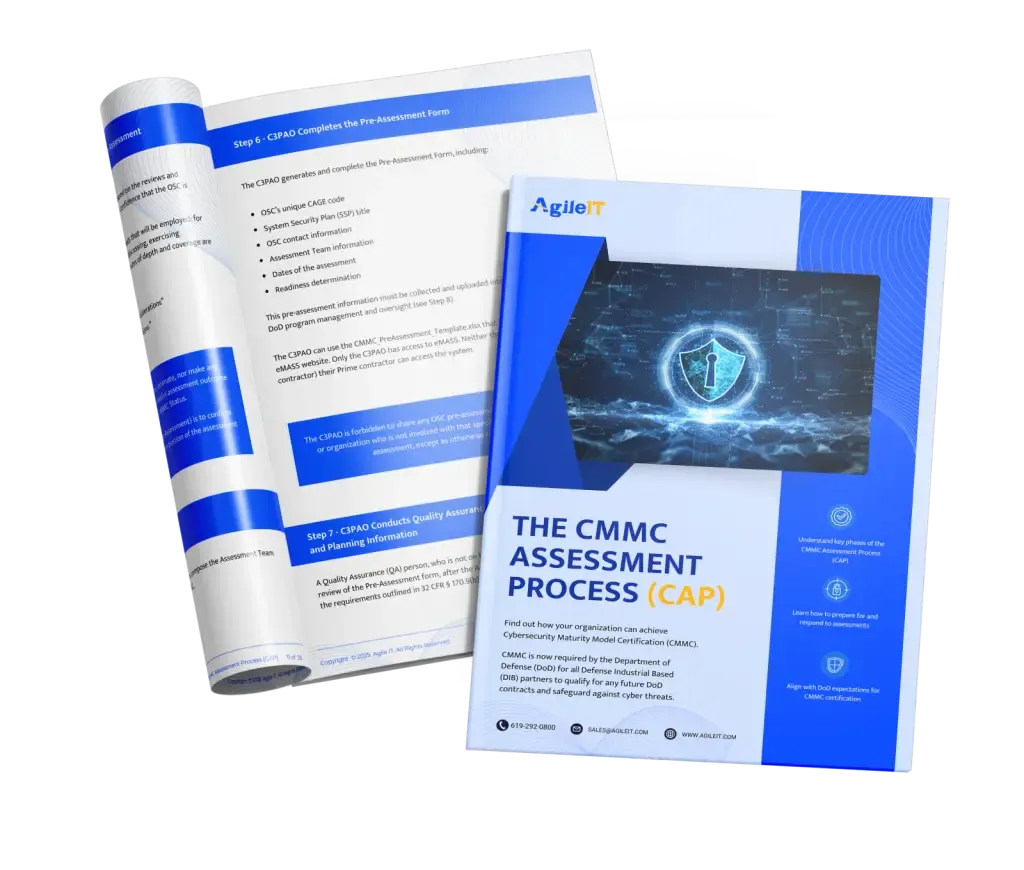Windows 365 for Secure Controlled Unclassified Information
Discover how to manage and protect Controlled Unclassified Information using Windows 365. Learn about compliance, security benefits, and limitations.

The management of Controlled Unclassified Information (CUI) holds paramount importance for organizations across various sectors. But what is Controlled Unclassified Information (CUI)?
CUI encompasses sensitive information that, while not classified, requires safeguarding against unauthorized access and dissemination. This information can encompass a wide range of data, from technical specifications to critical infrastructure plans. Protecting it ensures that you are compliant with CMMC, DFARS, and ITAR regulations.
The National Institute of Standards and Technology (NIST) has established Special Publication 800-171 (NIST 800-171) to provide a comprehensive framework for safeguarding CUI. This framework outlines security controls that organizations must implement to protect the confidentiality, integrity, and availability of CUI.
Now, with the growing popularity of cloud-based solutions, you’re probably exploring how you can leverage advancements such as Windows 365 in your workflows. But can Windows 365 effectively address the specific security needs of CUI data? Let’s explore its potential while also acknowledging its limitations in this area.
Benefits and Limitations of Using Windows 365 for CUI Management
Windows 365 is a cloud-based virtual desktop service for creating individual virtual machines (VMs) hosted on Microsoft’s Azure cloud infrastructure. It offers a compelling solution for organizations seeking to empower their workforce with a secure and flexible work environment. Unlike traditional desktops, users access their Windows 365 virtual desktop through a dedicated client app available on various devices, including Windows PCs, Macs, tablets, and even thin clients.
This virtual desktop approach brings several advantages for general productivity and user experience:
-
Device Agnosticism Users can access their familiar Windows environment and applications from any internet-connected device, fostering mobility and remote work capabilities.
-
Standardized Experience Windows 365 ensures a consistent desktop experience regardless of the physical device used. This simplifies IT management and user onboarding.
-
Scalability and Flexibility Organizations can easily scale their virtual desktop deployments up or down based on changing needs, eliminating the need for upfront hardware investments.
-
Enhanced Security Since data and applications reside in Microsoft’s secure cloud environment, Windows 365 offers a layer of centralized data protection.
-
Improved Performance Virtual desktops benefit from the processing power and resources available on Microsoft’s Azure platform, potentially leading to smoother performance for users.
While Windows 365 offers a compelling cloud-based desktop solution, it has limitations regarding the direct management and control of Controlled Unclassified Information (CUI).
Windows 365 Limitations in CUI Compliance
-
Limited Granular Control Moving to Windows 365’s downsides, a key issue is its lack of detailed controls. This means users can easily move sensitive information in ways they shouldn’t. We see this as a problem, and we have developed a solution to address this concern.
-
User Experience vs. Compliance Needs While Windows 365 excels in creating a seamless user experience for general productivity, it falls short in offering specialized features for Controlled Unclassified Information (CUI) compliance, particularly those requirements set forth in NIST 800-171. This standard specifies stringent controls over data access, encryption, and loss prevention—areas where Windows 365’s generalist approach doesn’t directly provide solutions. This gap highlights the need for additional measures to ensure full compliance with CUI management standards.
Security Considerations for CUI in the Cloud
Although Windows 365 offers a layer of centralized data protection by hosting data in Microsoft’s Azure cloud, there are certain additional security measures that you need for handling CUI:
- Data Loss Prevention (DLP): DLP solutions act as a critical layer of security by identifying and blocking unauthorized data transfers. It helps you monitor user activity and enforce policies to prevent sensitive information like CUI from being accidentally or maliciously shared outside authorized channels.
- Encryption: Encrypting data at rest and in transit adds another layer of security. Even if unauthorized users gain access to CUI data, encryption renders it unreadable without the decryption key.
- Access Controls: Consider implementing strong access controls, such as multi-factor authentication and granting access to CUI only to authorized users based on the principle of least privilege.
- Microsoft Purview Information Protection: Integrate this tool to manage and secure your data more effectively. It enhances your ability to control access and ensure only the right eyes see your sensitive information.
A Comprehensive CUI Security Strategy
To implement Windows 365 for controlling the flow of Controlled Unclassified Information (CUI), follow these steps:
-
Understanding CUI and NIST 800-171 Requirements Define Controlled Unclassified Information (CUI) and familiarize yourself with NIST 800-171 compliance requirements related to CUI.
-
Choose the Right Microsoft 365 Plan Select a Microsoft 365 plan that aligns with your organization’s needs for managing CUI securely.
-
Implement Access Controls Utilize Microsoft Entra ID to enforce strong role-based access controls and conditional access policies to ensure only authorized individuals can access CUI.
-
Encrypt Data at Rest and in Transit Ensure data protection by encrypting sensitive information using customer-managed encryption keys as per NIST 800-171/CMMC requirements. Implement encryption mechanisms like BitLocker for data at rest and Transport Layer Security for data in transit.
-
Enhance Security with Data Policies
- Data Loss Prevention (DLP) Policies: Set up DLP policies in Microsoft 365 to safeguard against unintended or deliberate CUI exposure across platforms such as Exchange Online, SharePoint, and OneDrive. These policies help monitor and control the flow of sensitive information.
- Microsoft Purview Information Protection (MPIP): Utilize MPIP for a more tailored approach to data security. Beyond what DLP offers, MPIP allows for highly customizable protection settings, ensuring your CUI is securely managed and accessed only as intended.
-
Monitor and Detect Threats Use Microsoft 365’s Microsoft Defender suite to monitor email, endpoints, and cloud applications for suspicious activities. This comprehensive security solution aids in the detection and prevention of security breaches, offering robust protection against a wide range of cyber threats.
-
Incident Response and Logging Develop a robust incident response plan using Microsoft 365’s Security & Compliance Center to configure audit logs for incident investigation and compliance reporting.
-
Regular Security Assessments and Audits Conduct periodic security assessments, vulnerability testing, and compliance audits to ensure ongoing compliance with NIST 800-171/CMMC requirements.
Ensuring Security and Compliance
Windows 365, on its own, doesn’t directly address all the regulatory requirements for handling Controlled Unclassified Information (CUI) outlined in NIST 800-171. While it offers some security benefits by centralizing data in Microsoft’s Azure cloud, CUI compliance necessitates a more comprehensive security strategy.
Windows 365 can however contribute to a compliant environment by:
- Providing a centralized platform for managing user access and desktops, which can simplify security administration and potentially improve compliance efforts.
- Leveraging Microsoft’s secure Azure cloud infrastructure to offer a baseline level of data protection compared to traditional on-premises deployments.
However, to ensure full compliance with NIST 800-171, you must ensure the security considerations discussed above.
Final Thoughts
Using Windows 365 for managing Controlled Unclassified Information (CUI) can be effective when done right, ensuring you meet regulatory standards and boost your data security. However, maximizing the benefits of Windows 365 and overcoming its limitations requires careful implementation and strategic use of its features. Working with a partner who knows the ropes can make all the difference, helping you customize a security plan that covers all your bases.
Looking for help with Windows 365 and CUI? We’ve got you covered. Our team specializes in Microsoft Cloud security and more, ready to help you nail your digital transformation and security goals. Schedule a meeting with us, and let’s discuss how we can support your journey to stronger security.






